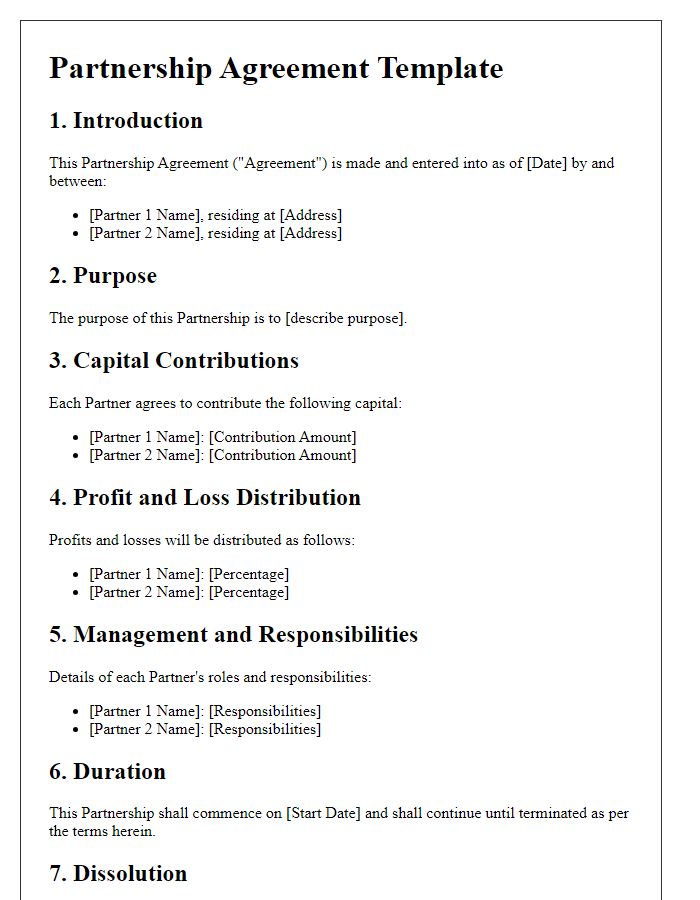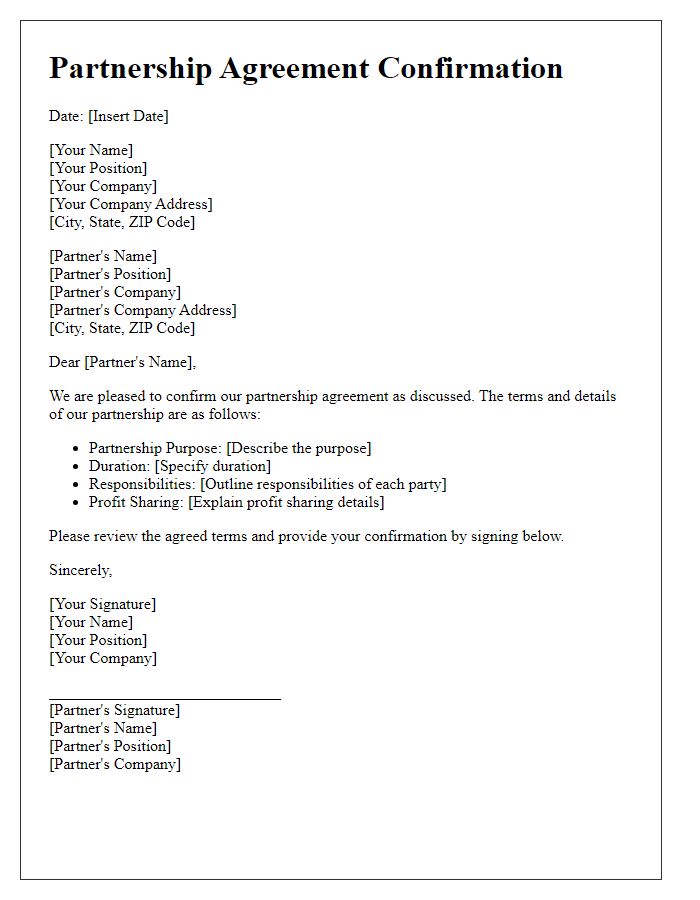Are you considering a partnership agreement but not sure where to start? Crafting a partnership agreement is crucial for establishing clear expectations and responsibilities between partners. This article will guide you through the essential elements of a solid template, ensuring both parties feel secure and valued. So, let's dive into the details and empower your partnership journeyâread more!

Introduction and Purpose
The partnership agreement aims to define the collaborative relationship between the involved parties, outlining responsibilities, contributions, and objectives. This document serves as a framework for fostering mutual growth, enhancing operational efficiency, and achieving shared goals within the established partnership. By clearly stating the intent of cooperation, the agreement sets the foundation for transparent communication, accountability, and effective management of resources. The overarching purpose is to create a synergistic alliance that leverages the strengths of each partner, ultimately driving success and innovation in joint ventures and initiatives.
Roles and Responsibilities
In a partnership agreement draft, clearly defining roles and responsibilities is crucial for establishing a successful collaboration. Each partner should outline their specific duties, such as marketing efforts, financial oversight, or product development. For instance, the Marketing Partner may lead promotional campaigns targeting niche demographics, while the Financial Partner manages budgets and funding allocations, ensuring compliance with financial regulations. The Operations Partner could oversee day-to-day activities, maintaining quality control and supply chain efficiency. Regular communication protocols should be established, detailing how partners will report progress, manage conflicts, and make decisions collectively. Additionally, timelines for deliverables and performance metrics can enhance accountability among all parties involved. This structured approach fosters transparency and reinforces the partnership's commitment to shared goals.
Terms and Conditions
A partnership agreement outlines the terms and conditions governing the relationship between two or more parties seeking to collaborate for mutual benefit. Fundamental elements include the distribution of profits, responsibilities of each partner, and procedures for resolving disputes. Clear definitions of each partner's contributions--whether financial, intellectual property, or labor--are crucial to avoid conflicts. The agreement should specify the partnership duration, withdrawal procedures, and conditions under which the partnership may be dissolved. Legal compliance with local regulations, such as business licenses in [specific location], enhances the agreement's validity. Ultimately, a well-detailed partnership agreement fosters a collaborative spirit, ensures accountability, and protects the interests of all parties involved.
Financial Contributions
A partnership agreement outlining financial contributions is crucial for establishing clear expectations among partners involved in a business venture. This document should detail each partner's monetary investments, specifying amounts (for example, $50,000 from Partner A and $30,000 from Partner B) as well as the timeline for contributions (such as a one-time payment or quarterly installments). It can also include details about how profits and losses will be shared based on those contributions, assigning percentages (75% for Partner A and 25% for Partner B) to reflect their stakes. Additionally, terms regarding additional funding requirements, such as emergency capital requirements, should be articulated to ensure all partners are aware of future financial responsibilities. Establishing a process for addressing financial disputes, including mediation or arbitration methods, also proves essential for maintaining a healthy partnership dynamic.
Signature and Agreement Acknowledgment
Partnership agreements establish mutual understanding in business collaborations. Signature lines provide necessary sections where parties display their legal endorsements, ensuring commitment. Signatories often include key stakeholders such as CEOs or company founders, whose titles solidify authority. Date lines accompany signatures, documenting the formal acknowledgment of terms agreed upon. The physical location of signing, often a headquarters or corporate office, might also be noted to maintain a record of jurisdiction. This section is critical as it signifies readiness to execute the responsibilities outlined, fostering trust and accountability amongst the parties involved in the partnership.













Comments